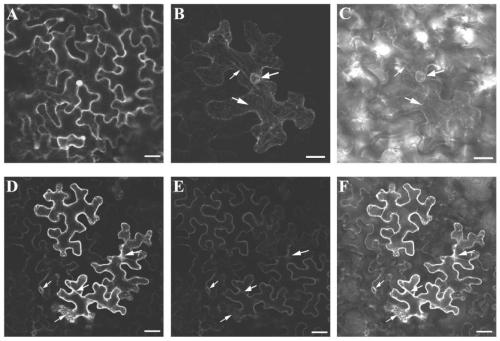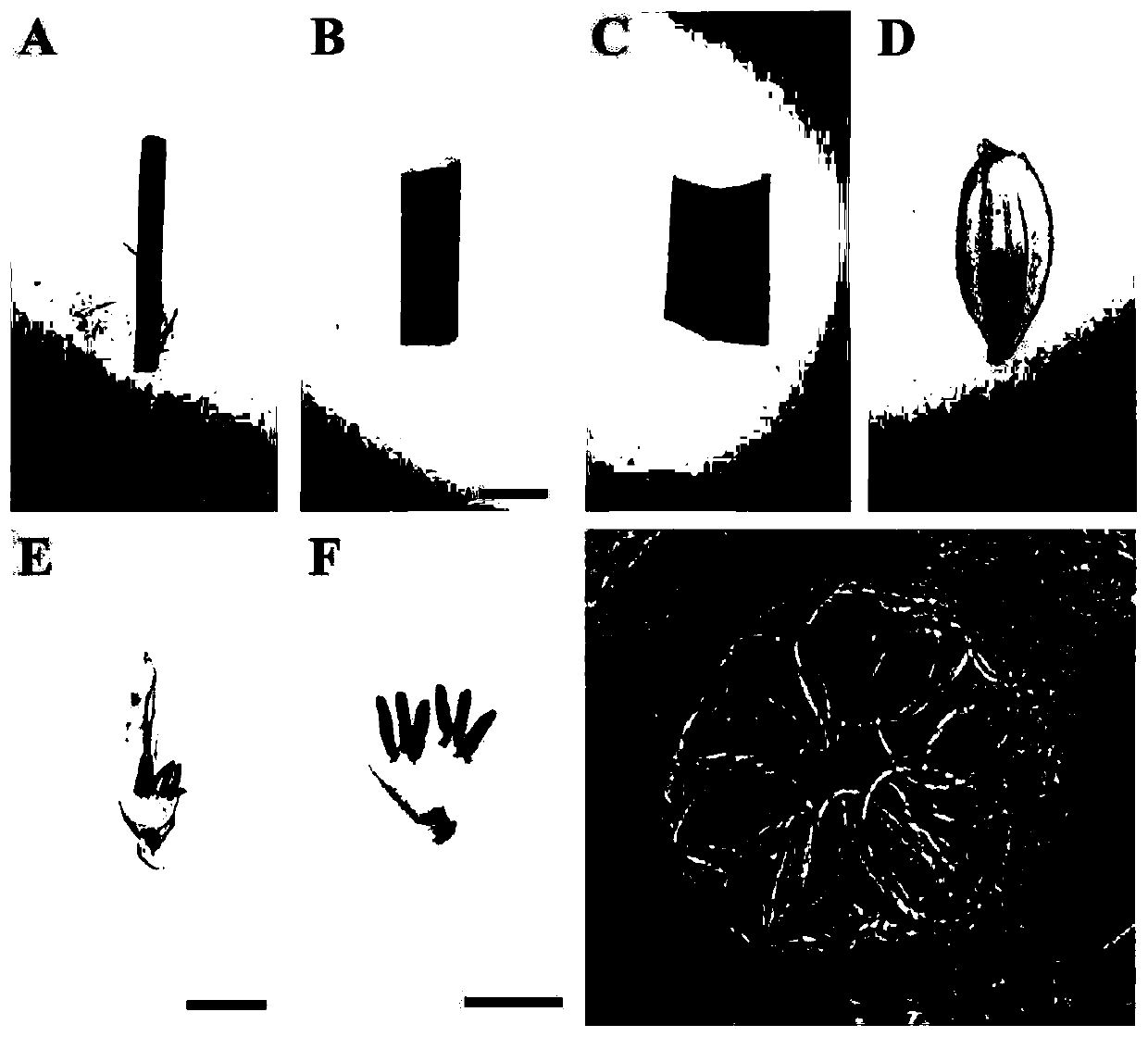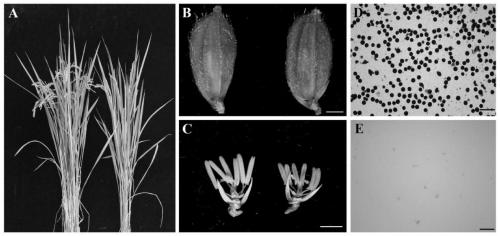A kind of rice male fertility regulation gene osstrl2 and its application
A technology for male fertility and gene regulation, applied in the fields of plant genetic engineering and plant breeding
- Summary
- Abstract
- Description
- Claims
- Application Information
AI Technical Summary
Problems solved by technology
Method used
Image
Examples
Embodiment 1
[0047] Example 1. Cloning and functional analysis of rice fertility control protein coding gene OsSTRL2
[0048] 1. OsSTRL2 gene full-length cDNA cloning, expression vector construction and subcellular localization
[0049] The inventors used bioinformatics techniques well known to those skilled in the art to determine a complete rice male reproductive development control protein OsSTRL2 from the rice genome. After software analysis and cDNA cloning, its CDS is 1293bp, as shown in SEQ ID NO: 1, encoding a rice male reproductive development control protein with a full length of 430 amino acids, and its sequence is shown in SEQ ID NO: 2. The result of the whole nucleotide sequence analysis shows that: the full length of the OsSTRL2 gene is 2091bp (SEQ ID NO: 3, including the regulatory region and intron).
[0050] Using the RNA of the normal wild-type rice variety Zhonghua No. 9 as a template, the first-strand cDNA was synthesized, and the full-length cDNA of OsSTRL2 was passed...
Embodiment 2
[0053] Embodiment 2, creation of rice male sterile line
[0054] Create osstrl2 rice male sterile line by genetic engineering or other means
[0055] The sequence of the coding region of the OsSTRL2 gene in this example is shown in SEQ ID NO:2. The osstrl2 mutant material in this example is obtained from the conventional japonica rice variety Zhonghua 9 through sequence variation of the OsSTRL2 gene.
[0056] Specifically, the target site of the OsSTRL2 gene (SEQID NO: 9) was first designed using CRISPR / Cas9 technology, and then the VK005-01-OsSTRL2 knockout vector was constructed to identify the recombinant vector, wherein the expression of the target site was controlled by the OsU3 promoter drive. The knockout vector was introduced into the genome of wild-type rice Zhonghua No. 9 by the rice transgenic method in Example 1. After the obtained regenerated plants were transplanted and survived, the transformed plants were screened with hygromycin; the total DNA of the leaves...
Embodiment 3
[0060] Example 3, Restoration of the Fertility of the Rice Male Sterile Line osstrl2 That Is the Complementary Function of the Transgene
[0061] Using the DNA of the normal wild-type rice variety Zhonghua No. 9 as a template, the fragment SEQ ID NO was amplified by the primer pair OsSTRL2-COM-F (SEQ ID NO: 12) and OsSTRL2-COM-R (SEQ ID NO: 13) :14, the fragment was cloned into the vector pCMBIYA1300, and P1300-OsSTRL2-COM was successfully constructed. Similarly, the vector P1300-OsSTRL2-COM was introduced by the rice transgenic method in Example 1 into the young panicles that do not have hygromycin resistance but are male sterile phenotype in the BC1F2 offspring of the rice male sterile line osstrl2 in the callus tissue. The obtained regenerated plants were transplanted and survived, and the transformed plants were selected with hygromycin. The transgenic T0 generation plants of the positive plants were observed for rice fertility, and the findings ( Figure 4 ) showed tha...
PUM
 Login to View More
Login to View More Abstract
Description
Claims
Application Information
 Login to View More
Login to View More - R&D
- Intellectual Property
- Life Sciences
- Materials
- Tech Scout
- Unparalleled Data Quality
- Higher Quality Content
- 60% Fewer Hallucinations
Browse by: Latest US Patents, China's latest patents, Technical Efficacy Thesaurus, Application Domain, Technology Topic, Popular Technical Reports.
© 2025 PatSnap. All rights reserved.Legal|Privacy policy|Modern Slavery Act Transparency Statement|Sitemap|About US| Contact US: help@patsnap.com



